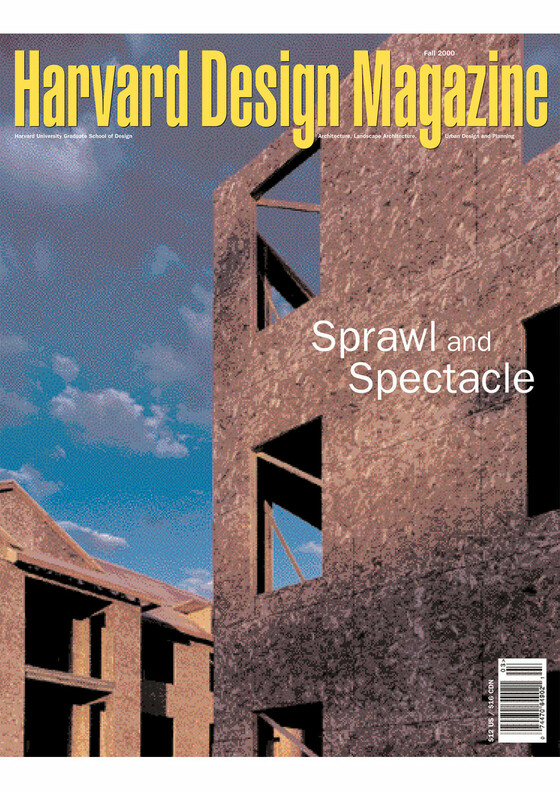You Are Here by Frances Anderton
12: Sprawl and Spectacle

We are constantly offered, and usually eat to satiation, the pre-digested food of electronic and built spectacle, from flashing webpages to themed environments like Planet Hollywood. And, satiated, we need and ask less of buildings, landscapes, and streets. Thus we tolerate sprawl—expanses of low density development that is, as Phil Thall’s photographs and Mitchell Schwarzer’s words so powerfully show, quintessentially blank. And that blankness in turn makes more alluring the fantasy world of spectacle, a world of environmental and psychological interiors—of shopping, watching movies, surfing the Internet, daydreaming, immersion in the waves coming from our video and stereo systems…
How architects and other designers should respond to this situation seems by no means clear. It is easy to be moralistic about the decadence of the culture of spectacle, while at the same time feeding from it with as much gusto as the next person—special effects movies like The Matrix are a kick; finding, on the Web, that one music cd that will fill the ultimate market niche of one’s quirky personal desires is a thrill. Victorian and Protestant guilt about the pursuit of pleasure has all but vanished. But the question remains: what does a life of consumption of pre-packaged fantasies leave out?
— William S. Saunders (excerpted from the introduction)
John Beardsley
Andy Merrifield
James S. Russell
Peter Hall
Ellen Dunham-Jones
Luis Fernández-Galiano
Bob Thall
Michael Sorkin
Mitchell Schwarzer
Daniel Naegele
Tim Benton
Barry Bergdoll
Andy Merrifield
Julia Czerniak
Robert A. Beauregard
Daniel Naegele
Wouter Vanstiphout